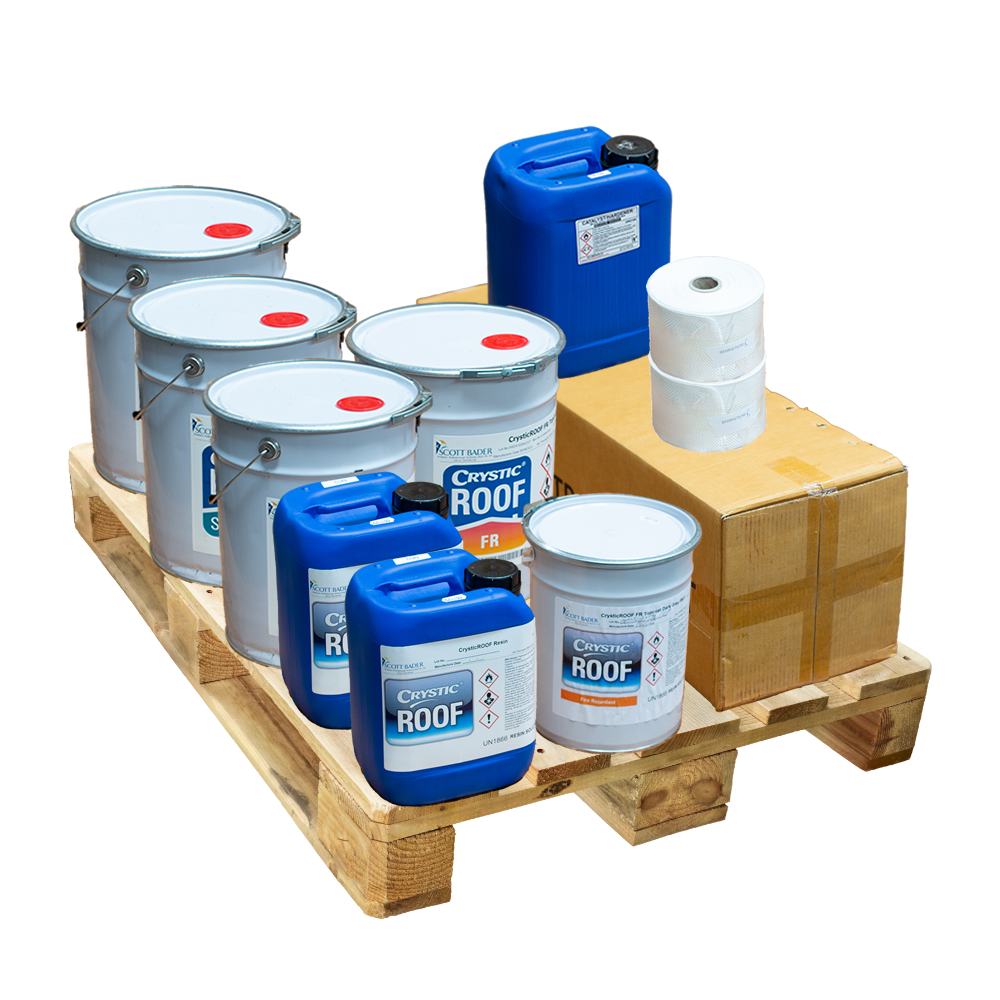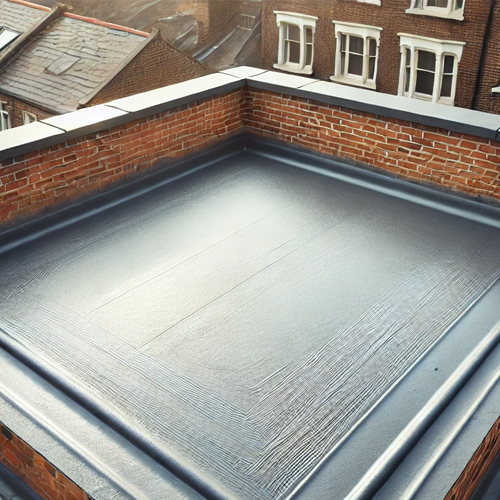Fibreglass GRP Roofing
GRP (Fibreglass) makes an excellent waterproof coating for flat and inclined roofs. With a lifespan of 30+ years the cost-effectiveness of fibreglass roofing is amazing. We are an official distributor and training centre for Crystic GRP Roofing Systems which come with material guarantees of upto 25 years!
We sell everything you need for a fibreglass roof project from the UKs top-rated supplier - Resins, topcoats, matt, trims and all the tools you need. Download a free GRP Roof guide and call our experts for free advice - Delivery as soon as the next day when ordered before 1.00pm. Order securely online or over the phone.
History of GRP Roofing (Fibreglass Roofing)
GRP (Glass Reinforced Polyester) roofing originated from the developments in the early 20th century. In 1935, Corning Glass and Owens-Illinois collaborated to further develop fibreglass. They patented “Fibreglas” in 1936 and merged to form Owens Corning in 1938. Owens-Corning was instrumental in using fibreglass and polyester resin to create airplane parts during the war. The development of polyester resin in the 1940s, notably for boat building, led to the evolution of GRP roofing from marine systems.
Construction of GRP Roofing
Materials The construction of GRP flat roofs involves materials such as polyester resin, MEKP catalyst, glass fibre chopped strand matting (CSM), and GRP trims. Tools like polyester rollers, paddle rollers, and paintbrushes are used in the process.
Design Considerations It's important to consider the design of the flat roof in the context of the fibreglass laminate. GRP flat roofs vary from thin systems made from 450-gram per square meter CSM to multi-layered systems using 600-gram CSM.
Key Components Essential components include OSB3 Timber Decking for the base, PIR Insulation for thermal efficiency, and GRP Edge Trims for aesthetics and protection. Polyester resin is combined with glass fibre matting to create the laminate, with MEKP catalyst used for curing. The topcoat, or flowcoat, is applied as a final protective and color layer.
Installation Process The installation process includes essential steps such as preparing and inspecting the deck, calculating the roof size, and installing edge trims and the laminate. The laminate is a crucial part, providing a seamless, strong, and water-resistant barrier.
Health and Safety Safety is a critical aspect of GRP roofing installation, involving risks such as working at heights and manual handling. It is advised to consult experienced professionals and ensure adequate safety measures.
Advantages of GRP Roofing
Durability and Versatility: GRP, being a composite material made from polyester resin and glass fibre, is known for its waterproof, structurally sound, chemically resistant, and durable properties, making it an appealing choice for construction and other industries.







